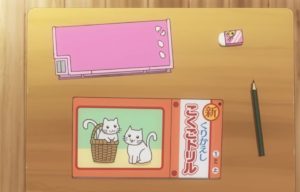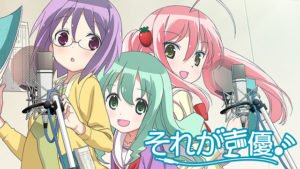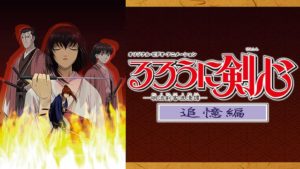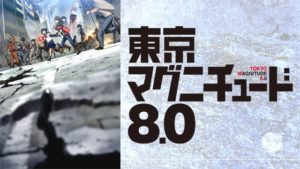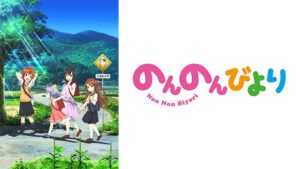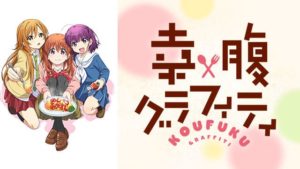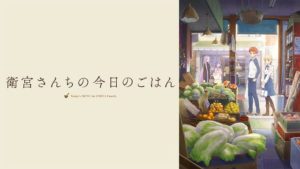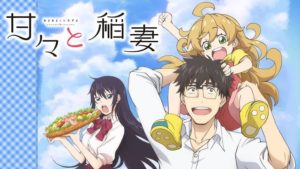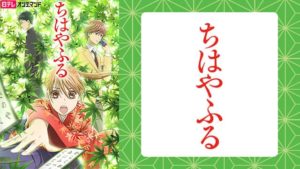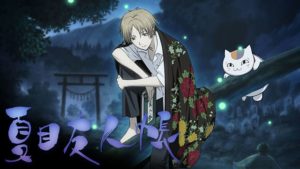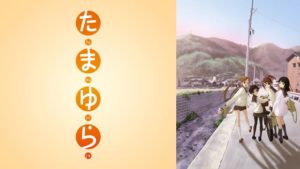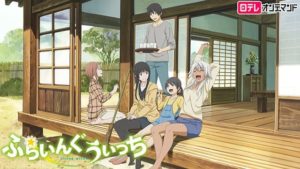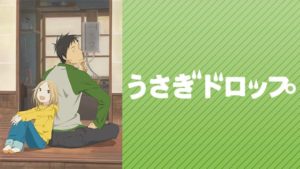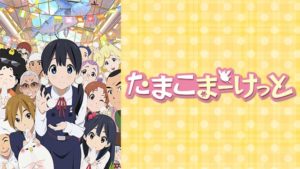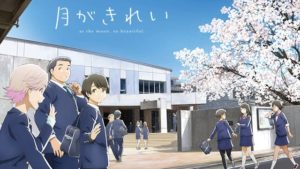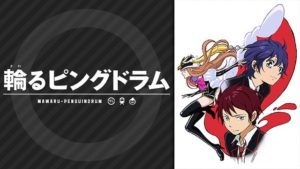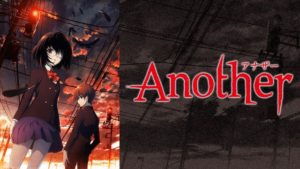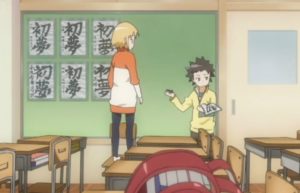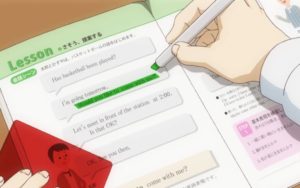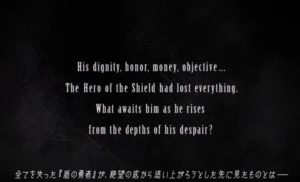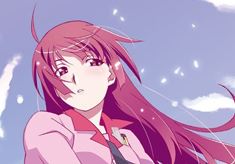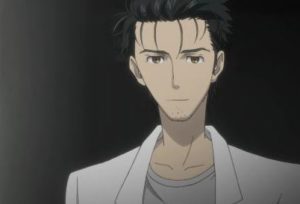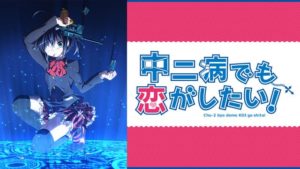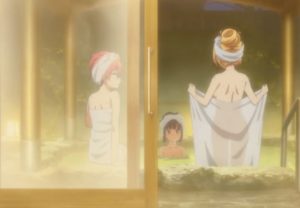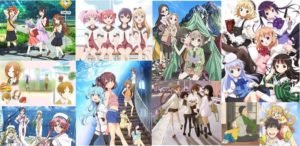How to Learn Japanese with Anime
Introduction
As you read this article, of course, many people around the world would like to learn Japanese from Japanese animation. However, when you learn Japanese, if you are only trying to learn from anime, you are mistaken. No one can learn Japanese from anime alone. So how do you incorporate anime into learning Japanese? This article shows how to effectively incorporate anime into Japanese language learning.
1. Why it is impossible to learn Japanese only with anime
1. You must learn words
First of all, you have to learn Japanese words. Just like when you understand your mother tongue, you need to study words when you learn Japanese. Even if you want to understand the contents of anime, you should check the meaning of words first. Words are the basic of the basics. Next, you must acquire basic grammar skills. You can’t understand a conversation just by using words.
This is a Japanese language textbook used in Japanese elementary schools.
©2013 あっと・株式会社KADOKAWA メディアファクトリー刊/旭丘分校管理組合
1.2. You have to understand if the Japanese words used by the anime characters are correct.
In anime, various characters depict various thoughts in various worlds. However, because the world is unique, it is necessary to doubt whether the Japanese words they are using are common Japanese. For example, what does it mean when Naruto (the main character of the anime, “NARUTO”) ends his statements with “…DATTEBAYO”? This is a dialect of Kanto or Tokyo in Japan, but few Japanese people know about it. When “…DATTEBAYO” is expressed in standard Japanese, it becomes “…NANDAYO”.
The reason why uncommon Japanese words are naturally used in anime is because it makes it easier to symbolize the way characters speak, not to mention the way they look, in order to seek strong characters that will be remembered. Also, if you use “…DATTEBAYO” to communicate with Japanese people, they will think, “This person imitates Naruto.” Children can imitate Naruto, but adults imitating Naruto is ridiculous. To avoid this, in order to learn Japanese in anime, you must first learn the Japanese language until you can distinguish between standard Japanese and non-standard Japanese.
1.3. Learning Japanese in anime is limited/biased
As mentioned above, each anime has its own unique view of the world. Therefore, even if one can understand a work only by Japanese voice, it does not mean that one can understand all Japanese. For example, suppose you were able to watch the world-popular “ONE PIECE” perfectly. Then you will be able to understand the Japanese used in the “ONE PIECE” world view, but you will not be able to understand the Japanese used in the “Detective Conan”. The reason for this is that there are words that do not appear in “ONE PIECE” because the world views between these two works are completely different. For example, you might use the word “detective” in “ONE PIECE” but what about Conan’s favorite words “迷宮” (めいきゅう, labyrinth) and “犯人” (はんにん, culprit)? You may not be able to understand it because it probably won’t appear in “ONE PIECE”. As you can see, there is a limit to the number of words that can be learned in an animation. If you want to speak Japanese, you need to learn more Japanese words.
1.4. With English subtitles, you get distracted by them and can’t fully understand Japanese
If you add English subtitles when you watch anime, it will be much easier to understand the contents. But when you watch anime with English subtitles, don’t you find yourself focused on subtitles? If you want to learn Japanese through anime, you have to listen to Japanese well, not just reading subtitles. Therefore, when you study Japanese in anime, you basically have to make an effort to turn off English subtitles and add them only to the parts you don’t understand.
2. Why Anime Helps You Learn Japanese
2.1. It can become a listening exercise
You may have found it impossible to learn Japanese only with anime. However, watching anime is very effective for studying Japanese. The reason is that anime is suitable for Japanese listening.
The voices of the anime characters come from voice actors. In Japan, the profession of voice acting is now very popular. Therefore, there are many training schools specializing in voice acting, and only those who are good at it can become voice actors.
At voice acting schools, they don’t just study acting and expression. It starts with training to make the body able to speak properly, then goes on to training in vocalization, active tongue, pronunciation, vocal training to sing songs, etc. They work so hard at training schools and improve their acting and expression skills, but only those who win auditions can become voice actors. Becoming a voice actor is a very narrow and difficult road.
Anime “Seiyu’s Life! ” Depicting the actual situation of the voice actor industry with comedy
©あさのますみ・畑健二郎/イヤホンズ応援団
That’s why the Japanese they speak is of the highest quality in terms of “vocalization and pronunciation”. Of course, “pronunciation and vocalization” is better for anime voice actors than for movie and drama actors. So why not incorporate anime into your listening studies? That’s why animation plays a role in learning Japanese.
2.2. It helps you learn about Japanese history, geography and culture
It’s not just the characters’ lives that you can learn from anime. You can also learn about Japanese scenery and culture.
Rurouni Kenshin
©和月伸宏/集英社・フジテレビ・アニプレックス
To begin with, from a simple point of view, you can learn about Japanese history and old culture from historical anime. The clothes and streets in “Rurouni Kenshin” were from the Edo period to the Meiji period. Many Japanese swords that Japanese are proud of appear in this work, and historical facts are also depicted from the end of the Edo period.
Tokyo Magnitude 8.0
And, of course, there are also animations where you can learn about Japanese geography and food culture. In “Tokyo Magnitude 8.0” you can learn about Japan’s geography, the fact that Japan is an earthquake-prone country, and how Japanese people behave in times of emergency. For example, you can learn about the dangers of wearing sandals while on the move after a disaster, the existence of a disaster message board, and other information useful in the event of a disaster.
Non Non Biyori
“Non Non Biyori” is set in a rural area of Japan where there are few spots in the anime. The laid-back rural people take their time in taking action and tend to speak slowly. And because the countryside has a small population, the school sizes are small. The main dishes served at school lunches are edible wild plants and Japanese sweets. In this work, you can also learn about the culture of eating grass because there is a scene where wild vegetables are picked by the roadside.
Gourmet Girl Graffiti
©川井マコト・芳文社/幸腹グラフィティ製作委員会
There are other works that tell us a lot about the food that Japanese people usually eat, such as “Gourmet Girl Graffiti”, “Today’s Menu for the Emiya Family” , and “Sweet lightning”. In these works, you can watch a series of ways to make and eat meals, and there are many words used to describe meals.
Today’s Menu for the Emiya Family
©TAa・KADOKAWA・TYPE-MOON / 「衛宮さんちの今日のごはん」製作委員会
Therefore, if you look at these works, you will not only be able to learn about food culture but also you will be able to learn Japanese, which makes eating with Japanese people more enjoyable.
Sweet lightning
© 雨隠ギド・講談社/「甘々と稲妻」製作委員会
2.3. You can understand the Japanese way of thinking and sense of values.
First of all, I would like to introduce an animation that shows the hierarchical relationship and sense of belonging in school club activities.
Sound! Euphonium
In “Sound! Euphonium” there is a scene where a hierarchical relationship is a problem. In particular, the thinking that “Can I pass the audition without you?” is typical of Japan, where hierarchical relationships are strictly considered. In addition, “Sound! Euphonium” provides the knowledge necessary to maintain a general hierarchical relationship, such as attitudes toward seniors and usage of honorifics.
Chihayafuru
©末次由紀/講談社・VAP・NTV
In “Chihayafuru” you can learn the sense of respect, attitude and admiration towards teachers and others who teach you. There are some simple honorific expressions used by seniors and juniors, but there are also some honorific expressions and humble expressions used for teachers. Also, I want you to watch it carefully because it shows how much respect I have for my teacher. Also, the main character has a strong sense of belonging to the Karuta school, and people of his generation who play the Karuta school treat them as if they were friends.
Free!
©おおじこうじ・京都アニメーション/岩鳶高校水泳部
In “Free!” many members appear who have a strong sense of belonging to the swimming school they went to when they were in elementary school. When the swimming school was closed, the members who entered the same high school started a swimming club. On the other hand, members who went to a different school gave up swimming. One of the characters gave up swimming for a variety of reasons, but it was basically because he was worried that he had broken up with the swimming school members and that their skills had declined a little. That is why I remember my passion for swimming in the relay with the members of the swimming school.
In this way, the idea of sticking to one team, etc. is unique to Japanese people who have a strong sense of belonging. On top of that, the Japanese have a unique sense of values that they don’t want to break the circle and atmosphere of the team, just as they did in “Sound! euphonium“.
And with sports like “Slam Dunk(*)” “The Prince of Tennis(*)” and “Hey, Cue!(*)” one can learn about belonging in a different way. Aiming to win the national championship, they begin with their efforts to earn the team jerseys, which are testaments to their high “sense of being part of a team” and being a regular member. The jerseys strengthen the sense of belonging.
Next, I would like to introduce you to some animations in which you can understand the Japanese way of thinking, thinking, and values outside of club activities.
Natsume Yujin-cho
“Natsume Yuji-cho” and “Mushishi(*)” are particularly different from Western thinking. In any case, they don’t kill the “妖怪” (ようかい, specter) which is a human enemy. For the Japanese, yokai is not something to defeat but to coexist, which is the Japanese value and religious view. This is based on Shinto, the only indigenous belief in Japan. Although Shinto worships deities, it is believed that deities do not reside alone but possess the nature and objects around them.
In addition, yokai is a reduced form of a god. That is why there is a pattern in which even if you do something bad, you are not a villain from the bottom of your heart, but you return to God from a yokai. Therefore, unlike villains in Western works, yokai should not be defeated. It is important for Japanese to coexist well with monsters and leave them alone.
So what kind of anime can you learn about ordinary human relationships in Japan?
Tamayura
The first is “Tamayura” which makes it easy to understand daily human relationships in local communities. This work is set in Takehara City, Hiroshima Prefecture, which is called “Small Kyoto in Aki” (note: Aki is an old way of addressing part of Hiroshima). Therefore, you can see old streets, Japanese houses and old furniture in this work. And in such a small town, the range of movement is narrow, so ordinary human relationships are easily expressed. There are also scenes where Japanese people worry about the “one’s own affairs” that they tend to worry about when they are high school students.
Flying witch
“Flying witch” is a similar work. You can also see large Buddhist altars that are common in rural Japan. Moreover, since the main character basically uses polite or honorific expressions, it is easy to refer to them. However, it is important to note that when you go on public rides with your pet in Japan, you must put it in a carry case.
Bunny drop
In addition, in “Bunny drop” you can learn about the general public’s view of children born out of wedlock and illegitimate children, as well as about raising children in Japan.
Tamako Market
In the “Tamako Market” you can learn about the general relationships in the shopping district and the friendship that matches your age. Also, the words in this work are simple, so they are suitable for the basic study of Japanese.
Tsuki ga Kirei
©2017「月がきれい」製作委員会
After checking your relationships, look at your view of love. In Europe and America, dating is the starting point, but in Japan, confession is the starting point. I have a date after I tell my feelings to my partner. To get an idea of the atmosphere, look at “Tsuki ga Kirei”, “One eek Friends(*)” and “True Tears(*)”. These works describe in detail the love of puberty and the complicated state of mind before dating. Since the main character of “Golden Time(*)” is a university student, it is easy to understand the relationships and worries of older people as well as the relationships between university clubs.
2.4. You can see the negative side of Japan.
When They Cry
“When They Cry” is the first anime that shows the negative side of Japan. This movie is a mystery that follows an incident in a village where the traditional aspect of society remains strong, but it contains exclusive aspects such as how to deal with people who violate the taboo of the village. Japanese have a particularly strong sense of belonging, so they sometimes act coldly toward people who are different from themselves. In this situation, it is more correct to say that Japan is an island nation than to say that it has a strong sense of belonging. The term “insularity” refers to a lack of contact with other countries, which leads to a lack of tolerance or a narrow view of other countries and foreigners.
Historically, Japanese small villages actually had their own “rules of the village.” No matter how old-fashioned and unreasonable these rules might have been, there were certain people who simply refused to give up on the execution of the rules. Those people tended to exclude whoever criticized or posed opinions on the rules. This negative aspect of the Japanese way of thinking has a lot to do with the international situation in Japan, which was reluctant to accept tourists and workers.
Have you ever felt “Japanese people are cold” or has one of your friends who visited Japan told you so? The response from Japanese people to foreigners may have been more unkind than shy. The word “おもてなし” (spirit of hospitality) which became a topic of conversation at the time of the Olympics bid, has changed the Japanese considerably. But I still haven’t opened my heart to people from other countries. The problem of insularity is so deep-rooted.
Penguindrum
(C)イクニチャウダー/ピングループ
“Penguindrum” describes the relationship between the family of the perpetrator and the family of the victim. This is a powerful work based on the sarin attack on the Tokyo subway system, which actually occurred in Japan. A girl from the victim’s family who falls in love with one of the assailants’ family members. The family of the perpetrator’s fate will eventually change. It conveys concepts that are difficult to depict in anime with glamorous pictures, such as conflicts, social connections, and subtle feelings toward the parents who caused the incident.
Another
In “Another” the main character’s family name, Sakakibara, created an ominous atmosphere by portraying the Kobe serial killing of children (Also known as Sakakibara Incident), which actually occurred in Japan. Even in Japan, there have been unfortunate incidents and events that have shocked the whole country, and many Japanese people remember these incidents.
2.5. To change the mood
I forgot the most important reason. It’s a change of pace. If you only studied Japanese in a textbook, you would be discouraged. So, if you occasionally watch anime and study Japanese, it will be a good change of pace for you. If you can have a change of pace, your future study of Japanese will be more encouraging.
It’s hard to keep studying at a desk for a long time.
©2013 あっと・株式会社KADOKAWA メディアファクトリー刊/旭丘分校管理組合
3. What You Should Do Before Learning Japanese in Anime
3.1. Understanding basic words, kanji, and grammar
Before learning Japanese in anime, you need to have minimum knowledge in mind. They are words, kanji, and grammar. If you don’t understand these, you won’t be able to study Japanese through anime. Especially for words, it’s a good idea to learn not only the main words in the textbook but also the words you need to understand when watching anime and the words for geeks. It is necessary to confirm kanji characters with Japanese subtitles, and it is also essential to see works such as “Neon Genesis Evangelion(*)” in which large kanji characters appear on the screen.
Japanese elementary school students learn more than 1,000 kanji in six years of elementary school.
©2016 三部けい/KADOKAWA/アニメ「僕街」製作委員会
©桜場コハル・講談社/5年2組保護者会
Grammar is difficult. English always requires a subject, but the Japanese don’t necessarily require a subject. In English, the predicate always comes after the subject, but in Japanese, it comes at the end. On top of that, the Japanese can be understood even if the sentence structure is inconsistent. That’s why you have to keep Japanese grammar in mind first.
3.2. Know the differences between spoken and written Japanese and between men and women.
This is something you should know before learning Japanese through anime. That is, the Japanese language has something called “spoken language”. This spoken language is looser than the Japanese written in the text, and even just simple words can be understood depending on the context. For this reason, it is important to note that all the words used in anime are spoken, and that understanding anime does not mean that you can read or write. And remember that in spoken language, you don’t need to strictly follow the grammatical rules.
Just like when you learn Japanese, Japanese people learn spoken English too.
©2015 あっと・KADOKAWA刊/旭丘分校管理組合二期
Also, you should be aware that the Japanese language differs between men and women. For example, a feminine ending is “…DAWA” “…NE”, while a masculine ending is “…DANA” “…DARO”. Therefore, if you learn Japanese from a female teacher, there may even be an adverse effect that the male student uses the female language.
Even in anime, there are characters who speak in unisex ways these days, but basically there is a clear distinction between male and female words. There is no doubt that your future understanding of Japanese will differ greatly depending on whether or not you have taken these differences into consideration when you study.
3.3. Understanding of respectful and humble words
Japan is a vertical society. Therefore, there are various “polite words” in the Japanese language. These are polite, respectful and humble words. Without a clear understanding of these three differences, it will be difficult to learn Japanese through anime. First of all, the simplest is politeness. These are words to be politely spoken to listeners, and basically, “…DESU.” “…MASU” and “…DE GOZAIMASU” are added at the end of the sentence. Therefore, it is used for relationships between friends because it does not depend on ranks or ages. And respectful words are used to show respect to superiors. Humble words (Kenjogo) is used to humble oneself or one’s family by showing respect to others.
Respect is an expression of respect for one’s superiors and is used when you want to pay due respect to the other party. Also, modesty is a self-deprecating expression used when you want to pay due respect to the other part by lowering yourself. Polite words with “…DESU” “…MASU” are often used in daily conversation and are used regardless of the person to whom they relate. Typical usage is described below.
| Basic Form | Respectful Word | Humble Word | Polite Word |
| How to Use | use ~ for one’s superiors | use ~ to humble oneself | a polite word to a listener |
| a person who acts | the other party | Oneself | Both |
| 言う いう Say | 仰る おっしゃる Say | 申す もうす Say | 言います いいます Say |
| 行く いく Go | いらっしゃる いらっしゃる Go | 伺う うかがう Go | 行きます いきます Go |
| 食べる たべる Eat | 召し上がる めしあがる Eat | 頂く いただく Eat | 食べます たべます Eat |
Have you noticed that respectful and humble words represent one word in a different language? The words “言う” (いう) are “仰る” (おっしゃる) and “申す” (もうす). These varieties make Japanese a difficult language. In Japanese, you can understand the hierarchical relationships between the two parties just by listening to the words. The sentence “田中さんが山本さんの家に伺う” (たなかさん が やまもとさん の いえ に うかがう, Tanaka visits Yamamoto’s house.) means that Yamamoto’s position is higher than Tanaka’s.
Moreover, verbs are not the only things that change. Business cards also change. For example, “あなたの家は白いです” (あなた の いえ は しろい です, Your house is white) is expressed in honorific form as “御宅は白いです” (おたく は しろい です) and “私の家は白いです” (わたし の いえ は しろい です, My house is white) is expressed in humble form as “拙宅は白いです” (せったく は しろい です). In this way, the word “家” (いえ, house) is changed to “御宅” (おたく, your house) or “拙宅” (せったく, our house). Even among Japanese, young people find this change in honorific expressions difficult.
4. How to incorporate anime into Japanese language study
4.1. Select the best anime for studying Japanese
To incorporate anime into Japanese language study, you first have to find a work that matches your Japanese level. That’s why your favorite work doesn’t always fit your level. This is very unfortunate, but if your favorite anime is above your Japanese level, you’ll never understand it. If your favorite anime is below your Japanese level, you may enjoy watching it as a hobby rather than studying. It’s hard to choose the work that fits your level. But don’t worry. I’ve analyzed and cataloged the Japanese level of over 100 anime works, so it’s easy to find the one that best suits you. I also wrote a separate article, “Top 10 Recommended Anime to Learn Japanese” which you should read.
4.2. How to use Japanese subtitles
It is very effective to use Japanese subtitles for learning while turning them on and off. As mentioned earlier, anime voice actors are Japanese-speaking professionals. Therefore, I want you to listen to anime works many times and learn from them. At this time, it is important to listen without subtitles because we tend to focus on subtitles rather than the characters’ actual lines. It would be more efficient to listen to a scene and learn little by little than to listen to all of the 25-minute anime at once. When you get used to Japanese, try emulating it too.
Below are Japanese and English subtitles for the “The Rising of the Shield Hero” promotion video. Again, it is difficult to read Japanese subtitles without understanding the words, kanji, and grammar.
©2019 アネコユサギ/KADOKAWA/盾の勇者の製作委員会
4.3. How to use English subtitles
First of all, you watch anime without subtitles, and when you don’t understand certain contents, you take notes and add Japanese subtitles to make sure that you can hear those parts properly. If you still don’t understand, look it up in your dictionary. Then, after you get the answers yourself, you confirm them with English subtitles. This is how you can develop the attitude of learning Japanese through anime.
4.4. Refer to the speech of a character who is of the same sex and personality as yourself
When you study listening and emulation using Japanese animation, it is meaningless to refer to characters that are far from yourself. As much as possible, you should refer to the speech of a character who is the same sex as you and has a similar personality. For example, it is difficult for a person with a relatively laid-back personality to refer to someone who speaks at a fast pace, and there is a gap when a very serious person imitates a character who ends their sentences with “…SSU”. It is also not good for adults to imitate the way children talk.
If you’re aiming for a higher level, even the change in tone of your voice should be guided by a character that is similar to yourself. It is difficult for a person who speaks with little intonation to imitate a rapidly changing tone in Japanese. If you have friends in the Kansai area, or if you want to move to the Kansai area, you should refer to the characters in the Kansai dialect.
There’s one note to make here. If your personality is similar to those of the characters below, don’t imitate them: Senjougahara Hitagi from “Bakemonogatari”, Gilgamesh from “Fate/stay night” or Rintaro Okabe from “STEINS; GATE”. This is because they use difficult Japanese with a very high-handed tone of voice, which is the type of speech that most Japanese dislike.
Senjougahara Hitagi from “Bakemonogatari”
©西尾維新/講談社・アニプレックス・シャフト
Gilgamesh from “Fate/stay night”
©TYPE-MOON・ufotable・FSNPC
Rintaro Okabe from “STEINS; GATE”
(C)2011 5pb./Nitroplus 未来ガジェット研究所
6. Notes on Learning Japanese with Anime
6.1. the act of using something as a study
If you watch anime as a hobby, it’s better if you enjoy it more, but if you use it as a learning experience, you have to draw a line. When watching anime to learn Japanese, if you are distracted, it is important to stop watching your favorite anime and watch anime for study.
And if you study Japanese just to watch anime, you will never be able to continue. Japanese is very difficult, so if you only want to watch an anime that can be subtitled in English, you will surely end up getting frustrated somewhere. In addition to watching anime, I want you to have a purpose to learn Japanese. For example, make a goal to make otaku friends, go to Akihabara, or work in Japan. I work in Tokyo, and there are many foreigners working in Japan. They are very diverse, from Westerners to Asians and Eastern Europeans. Not all of them can speak Japanese fluently, but there is no problem as long as it doesn’t interfere with their work. As you know, the Japanese aren’t very good at English. Therefore, many Japanese people are happy when foreigners speak even a little bit of Japanese.
6.2. Existence of coined words, chunibyo, and otaku words
Suppose you are learning Japanese with a piece of work. But is there a way for you to check if the characters in the work are using the correct Japanese? In fact, you can easily look it up by referring to another article I wrote earlier. For example, anime characters sometimes use coined words and otaku words. Coined words and otaku words are written so that they are not emulated, so you can easily understand them.
Love, Chunibyo & Other Delusions
And the most troubling is the existence of Chūnibyō. “Chūnibyō (中二病) is a Japanese colloquial term that translates to “middle two disease”, i.e. “middle-school second-year syndrome” or “eighth-grader syndrome”, typically used to describe early teens who have delusions of grandeur, who so desperately want to stand out that they have convinced themselves they have hidden knowledge or secret powers”, according to Wikipedia. Animated characters with this syndrome tend to use characteristic speech and terminology. If you are Japanese, you can easily understand if a character is showing symptoms of Chūnibyō, but without this knowledge, you will end up speaking strange Japanese. But don’t worry. Each anime has an article that analyzes the way the characters talk. The characters in the second category are clearly marked and not emulated. In addition, each character’s notes on emulation and listening are detailed.
6.3. Reinforce your Japanese skills with anime after you finish a basic study
Again, it’s important, so I’ll say it again. It is impossible to learn Japanese using anime from the beginning. What is important in learning Japanese is to learn the basics in textbooks and schools. After this basic study, you will be able to learn Japanese using anime. For this reason, first of all, you should study basic words, kanji, and grammar in textbooks and schools. These are similar to knocking down a slime. They gradually beat the opponent and raise the level, and finally become able to fight the enemy. Learning Japanese through anime is, so to speak, a boss battle.
Summary
It is impossible to learn Japanese only with anime. However, it is possible to learn Japanese by using anime well. The key is to complete basic learning such as vocabulary, kanji, and grammar before using anime. If you can do that, you will be able to understand Japanese culture and Japanese values by learning Japanese through anime.
When it’s time to incorporate anime into Japanese language study, I want you to focus on listening first. Anime is very suitable for listening because it is spoken by professional voice actors who have been trained to pronounce Japanese well. And most importantly, which anime can be used to study Japanese? There is a list that analyzes the difficulty level of Japanese for each work, so please use it as a reference when choosing your work.
I hope your study of Japanese becomes more enjoyable.
